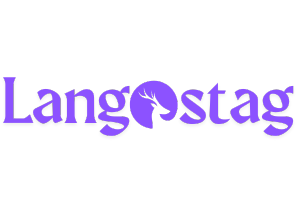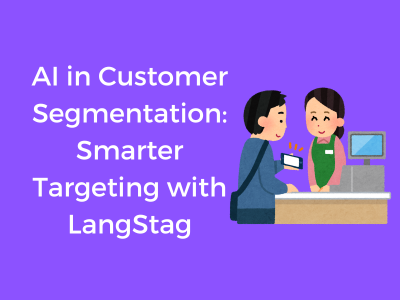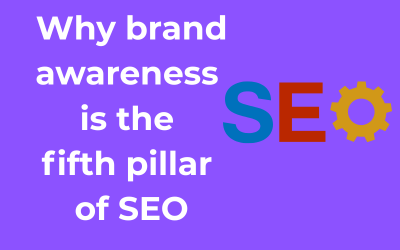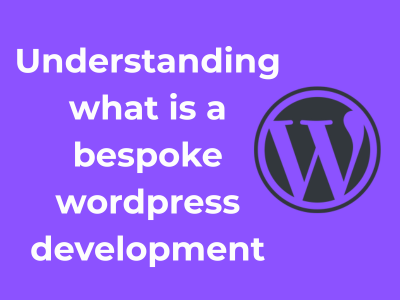Customer segmentation isn’t just a buzzword—it’s the secret sauce behind many successful marketing and sales strategies in today’s business world. Whether you’re a small brand looking to grow or a titanic corporation seeking to sharpen your focus, customer segmentation can transform the way you approach your audience. But before we dive too deep, let’s break it down into simple terms.
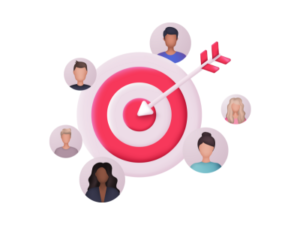
What Exactly Is Customer Segmentation?
At its core, customer segmentation is the practice of dividing your customers into distinct groups. These groups are created based on similar traits, behaviors, or preferences. Segmentation helps businesses understand who their customers are and what speaks to them, allowing companies to tailor product offerings, marketing strategies, and overall customer experiences.
Picture this: if your audience were a pie (preferably something delicious like chocolate), segmentation would be cutting that pie into slices. Each slice represents a unique group of customers, whether it’s based on demographics, purchasing habits, or lifestyle choices. And yes—you can end up with a slice of pie that distinctly belongs to chocoholics, fruit lovers, or dessert minimalists!
Why Is It Important in 2023 and Beyond?
The business world has become increasingly customer-first, and for a good reason. In today’s hyper-connected and data-driven marketplace, customers expect personalized experiences. They want to feel seen, heard, and valued—not just treated as one of many. Segmentation allows brands to step up and create these meaningful experiences.
- It empowers personalized marketing: Customers are more likely to interact with messaging that’s tailored to their needs. Think about how often you’ve clicked on an ad or email that seemed oddly specific (in a good way).
- It improves resource allocation: Knowing your audience segments ensures you’re not wasting time or money marketing to the wrong group.
- It sharpens decision-making: Clear audience insights give brands clarity when deciding what products to develop, promote, or fine-tune.
How Have Businesses Historically Approached It?
For decades, customer segmentation was conducted using traditional methods like surveys, focus groups, or historical purchase data. They worked well enough to give businesses a bird’s-eye view but weren’t always accurate or agile. Often, these methods disregarded more nuanced factors like real-time data or changing customer preferences.
However, as businesses have grown and technology has evolved, so too has the complexity of customer needs. Basic demographic stats—such as age, location, or income—are no longer enough. Businesses need to look at behaviors, motivations, and even psychographics to capture the full picture of their audience. And while the traditional way paved the path, many of today’s dynamic business challenges require smarter and more adaptive tools for segmentation.
Challenges Traditional Methods of Customer Segmentation Face
Alright, so you’re running a business, and you’ve heard how important customer segmentation is. You want to divide your audience into neat little groups based on characteristics like demographics or purchasing habits, and then market to them more effectively. Seems straightforward, right? Not so fast. Traditional customer segmentation methods have been around for decades, but they’re far from perfect. Let’s take a closer look at some of the major challenges they pose.
1. Data Overload: Too Much of a Good Thing
We live in an era where businesses are overwhelmed by the sheer amount of data being generated daily. Traditional methods often fail to handle this deluge effectively. These older techniques depend heavily on manually sifting through data, trusting spreadsheets, or using basic clustering algorithms. When you’re juggling hundreds – or even thousands – of variables, it’s next to impossible to keep track of it all.
Simply put, traditional tools just weren’t built for the enormity of complexity we have today. Important patterns, nuances, or customer traits may slip through the cracks, and that can mean missed opportunities for your business. Not great, right?
2. Relying on Assumptions: Oversimplifying People
Here’s the thing about traditional segmentation—it often assumes that humans can be neatly categorized into a handful of broad, fixed groups based on standard preferences or behaviors. But let’s be honest—people are nuanced and unpredictable! What about customers whose preferences evolve constantly? Or those who don’t fit neatly into demographic boxes?
By relying on rigid assumptions, traditional methods tend to stereotype customers rather than acknowledge their individuality. This one-size-fits-all approach can translate into campaigns that feel impersonal, out of touch, or, frankly, irrelevant to a large portion of your base.
3. Static and Slow Process
Traditional segmentation is like a snapshot—it only captures a moment in time. Once you’ve divided your audience into different groups, updating these categories can take a lot of time and effort. Consumer behaviors change fast in our digital world, and static methods don’t adapt well to these shifts.
Think about trying to sell winter coats in July to customers just because they bought them last winter. Outdated segmentation can leave your marketing efforts lagging behind reality. Not the best way to stay competitive, is it?
4. Lack of Real-Time Insights
This one is a biggie. Businesses today need to think on their feet, making informed, data-driven decisions at lightning speed. With traditional methods, by the time you gather the data, analyze it, and build your segmentation strategy, your customers might have already moved on to something else.
Traditional systems don’t cope well with dynamic consumer behavior, leaving businesses struggling to react quickly enough to real-time trends or sudden changes in customer preferences.
5. Cost and Expertise Barriers
Finally, let’s talk about feasibility. Manual segmentation processes or legacy systems can get expensive—hiring data analysts, investing in custom tools, and dedicating hours of precious time. On top of that, they require expertise many businesses don’t have in-house. It’s not just time-intensive but can leave smaller businesses at a disadvantage.
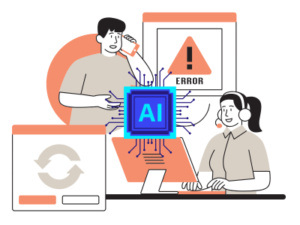
The Role of AI in Transforming Customer Insights
Have you ever thought about how businesses seem to know exactly what you want before you do? It’s not magic—it’s the genius of artificial intelligence (AI) hard at work revolutionizing customer insights. Let’s dive into how AI is shaking up the game and turning the art of customer segmentation into a science!
Why AI is a Game Changer
At its core, customer segmentation is about understanding people—what they like, what they need, and what makes them tick. But doing this efficiently for thousands (or even millions) of customers? That’s where traditional methods hit a wall. Enter AI.
Here’s the deal: AI can analyze unfathomable amounts of data in mere moments, spotting patterns and trends a human might miss entirely. And we’re not just talking demographic stats like age and location. AI looks deeper—behavior, preferences, online activities—essentially, the full story of how a customer interacts with a brand.
From Static Segments to Dynamic Personas
In the past, businesses created static customer segments. Once a customer was labeled as part of “Group A,” for instance, there might be little room to adjust that label—even as their preferences evolved. That approach? It’s outdated, friends!
AI flips this model on its head. Instead of rigid categories, AI works with dynamic personas. This means it tracks and adapts to the ever-changing behaviors and desires of customers. Think of it as a “living, breathing” understanding of who your audience truly is.
How AI Unlocks Hidden Gems in Your Data
One of the coolest things AI does is identify micro-segments you didn’t even know existed. For example, imagine a fitness brand that targets customers with general messages like “Get stronger.” AI might reveal nuances, such as a subset of clients who prefer yoga over weight lifting. With this newfound insight, the brand can craft unique messaging that resonates on a much deeper level.
- Behavioral Insights: AI analyzes clicks, purchases, and viewing habits to predict what a customer might do next.
- Sentiment Analysis: AI evaluates reviews, social posts, even emojis to gauge how customers feel about a product or service.
- Predictive Intelligence: Based on patterns, AI can forecast future customer needs, helping brands stay a step ahead.
Breaking Down Barriers with AI
Businesses often struggle with siloed data—bits and pieces of information scattered across systems that don’t communicate well. AI steps in as the ultimate connector, pulling all those bits together into one cohesive picture. It’s like organizing a messy attic into a perfectly cataloged library!
This leads to better collaboration across marketing teams, more precise targeting, and campaigns that are laser-focused on results.
How LangStag Leverages AI to Simplify Segmentation
Let’s face it—customer segmentation can feel like trying to solve a complex puzzle without having all the pieces in hand. Traditional methods take time, require guesswork, and often don’t deliver actionable results. This is where LangStag steps in, revolutionizing how businesses approach segmentation by integrating cutting-edge Artificial Intelligence (AI). But how exactly does LangStag manage to simplify such a daunting process? Well, buckle up, because we’re about to dive into it!
1. Data-Driven Magic
At its core, LangStag is fueled by AI’s ability to crunch mind-boggling amounts of data in seconds. Have you ever stared at a spreadsheet and thought, “How do I make sense of all these numbers?” LangStag’s AI doesn’t just make sense of it—it thrives on it. The platform pulls together data from multiple sources, whether it’s online shopping behavior, survey feedback, or even social media activity, and organizes it into meaningful patterns.
By analyzing these patterns, LangStag identifies clusters of customer behaviors that you might not even know existed. These aren’t your typical broad categories like “frequent buyers” or “budget shoppers.” Instead, we’re talking about hyper-specific groups like “tech-savvy professionals seeking eco-friendly products.” Now, that’s a level of insight your old Excel sheet could never provide!
2. Automation to the Rescue
Here’s a confession: segmentation has historically been a manual and time-consuming process. Sorting through data, identifying trends, and verifying your assumptions can take weeks (not to mention the headache involved). But with LangStag’s AI automation, what used to take weeks now takes minutes.
LangStag handles all the tedious stuff for you, like sifting through data sets, performing advanced analyses, and categorizing customers accordingly. It eliminates human error and frees up your team to focus on creative strategies and decision-making. Simply feed in your data and let the AI work its magic.
3. Behavioral Insights You Can Act On
One of LangStag’s standout capabilities is its focus on actionable insights. Sure, it’s one thing to know that “Group A buys more high-end products than Group B.” But LangStag takes it a step further by helping you understand the “why” behind customer behavior.
Maybe Group A values sustainable practices, which is why they’re drawn to high-end, eco-friendly options. Knowing this, you can adjust your marketing campaigns to highlight the sustainability aspect of your products, instantly resonating with your target audience. LangStag not only simplifies the segmentation process—it makes it actionable and strategy-ready.
4. Personalization at Scale
A common belief in business is that personalization doesn’t scale. But LangStag’s AI-driven methodology proves otherwise. By breaking your audience into smaller, highly detailed segments, it enables you to create personalized messaging for each group—without breaking a sweat.
- Send tailored emails with content that speaks directly to their interests.
- Adjust pricing strategies based on purchasing behavior.
- Serve targeted advertisements that feel more natural and less like spam.
This powerful combination of scalability and personalization is something every business dreams of achieving—and LangStag delivers.
5. User-Friendly Interface for Seamless Experience
Let’s be honest—AI can sound intimidating to those who aren’t fluent in tech-speak. But LangStag keeps it simple with an intuitive user interface. You don’t need a PhD in data science to make use of it. The platform guides you step-by-step through the process, making advanced AI solutions accessible to businesses of all sizes.
From a small startup with a lean marketing budget to an enterprise looking to fine-tune its customer touchpoints, LangStag empowers users to make smarter decisions with ease.
Real-Time Adaptation: Staying Relevant with AI-Driven Strategies
Let’s talk about something that every business dreams of: staying relevant in a world where consumer preferences and market trends seem to change faster than a viral TikTok dance. The solution? Real-time adaptation powered by Artificial Intelligence (AI). It’s a game-changer, and here’s why it matters more than ever.
What Does Real-Time Adaptation Even Mean?
Imagine having a front-row seat to your customers’ digital behavior as it unfolds. Instead of making decisions based on yesterday’s data (or let’s be honest, last month’s quarterly report), real-time adaptation lets businesses continuously assess changes in customer preferences, trends, and behavior to make adjustments on the spot.
For example, a customer browses luxury travel packages on your website. With real-time insights, your AI system could prompt a discount offer for first-class tickets or suggest related products right as the customer is engaged. Your brand becomes their ally, helping them find exactly what they need, exactly when they need it.
Why Does Your Business Need Real-Time Adaptation?
Here’s the deal: Consumers are spoiled for choice. If your messaging, offers, or customer experience feel out-of-touch—even slightly—they’ve got plenty of competitors to turn to. Real-time adaptation enabled by AI ensures you’re keeping up with your audience without missing a beat. Let’s break it down:
- Keeping Up With Trends: AI tools analyze what’s hot and what’s not—be it seasonal shopping surges, sudden changes in behavior, or even unexpected global events. Staying ahead means staying top-of-mind.
- Personalization At Scale: It’s one thing to manually tailor your approach to a handful of customers. It’s another to offer meaningful personalization to thousands. AI does the heavy lifting, allowing businesses to create unique experiences for each customer, minute by minute.
- Speedy Adjustments: Say goodbye to long lead times on campaigns. If your strategy needs tweaking, AI makes it possible to pivot quickly so you’re never behind the eight ball.
How LangStag Masters the Art of Real-Time Strategies
At LangStag, real-time adaptation is not just a buzzword. It’s woven into our DNA. Our AI-driven tools are equipped with impressive machine learning algorithms that can process data in the blink of an eye. By tracking patterns, preferences, and interactions, we empower brands to deliver smarter, faster, and more impactful strategies.
But that’s not all. What sets LangStag apart is our ability to digest both structured and unstructured data—think purchase history, chat transcripts, or social media sentiment. This ability provides a 360-degree view of the customer that adapts continuously in real time, putting you ahead of the curve.
And don’t worry if you’re intimidated by the tech—our platform is designed to be user-friendly. Even if you’re not a data scientist, you can harness the power of AI to keep your strategies agile and effective.
Making AI Work for You
Real-time adaptation might sound complex (and a bit intimidating), but its impact on your business is transformative. Lean into what AI-driven platforms like LangStag can offer, and watch how your ability to stay nimble and relevant turns into customer loyalty and increased ROI.
Case Studies: Businesses Excelling with LangStag’s Approach
Let’s be real – the true testament to any technology’s impact is in its real-world, on-the-ground success stories. While AI-driven customer segmentation sounds fantastic in theory, what’s more important is how companies are actually applying it. Spoiler alert: with tools like LangStag, they’re absolutely crushing it. Below, we’re diving into some case studies where businesses leveraged LangStag’s AI brilliance to transform their customer segmentation – and their bottom line.
1. Fashion Retailer Unlocks Hidden Audience Potential
Picture this: A booming online fashion retailer with an extensive catalog of trendy clothing. Problem? They were sending out one-size-fits-all marketing campaigns that just didn’t resonate. Their customers varied wildly in age, style preferences, and shopping habits. Enter LangStag.
With its AI-driven segmentation, LangStag helped the retailer break their audience into dynamic micro-segments. The AI analyzed purchase history, online behavior, and even website click patterns. One interesting pattern that emerged? Shoppers browsing pastel-colored clothing were significantly more likely to buy during midweek emails.
The solution? Hyper-targeted campaigns delivering specific style recommendations for each segment. Thanks to LangStag’s real-time learning, these campaigns evolved as preferences changed. End result: email open rates skyrocketed by 30%, and customer lifetime value surged by 22%. Cue the applause!
2. Subscription Box Service Revitalizes Retention Rates
A leading subscription box company was facing a major headache: high customer churn. They had tons of new subscribers joining every quarter, but too many were losing interest within months. The issue? They weren’t tailoring the experience.
Using LangStag, the company implemented AI-driven segmentation to dive deep into subscription data. The AI identified critical drop-off points and revealed patterns among different customer personas. Customers who binge-used the service within the first two weeks, for instance, were more likely to cancel after three months unless re-engaged proactively.
LangStag recommended personalized interventions, like targeted loyalty rewards or exclusive content tailored to customer interests. The company not only achieved a 50% reduction in churn but also turned passive subscribers into brand advocates.
3. Travel Agency Speaks the “Language of Wanderlust”
Here’s a fun one: a travel agency was struggling to break through the noise of a crowded industry. They found that generic email blasts promoting random travel deals fell flat. Customers are dreamers, sure, but they all dream differently.
LangStag came to the rescue with AI-driven, emotion-centric segmentation. The system analyzed not only customer preferences but also sentiment data from social media and survey feedback. This allowed the travel agency to identify distinct “wanderlust personas” – from tropical relaxation-seekers to architecture enthusiasts.
- Beach-goers received recommendations for serene island getaways.
- Adventure seekers got offers for rugged trekking expeditions.
- Cultural explorers enjoyed curated tips for historic city tours.
With such laser-focused messaging, bookings shot up by 40%. Customers weren’t just buying vacations – they felt like the agency “got” them. It was personalization done right.
Future Trends Shaping AI in Customer Segmentation
Let’s gaze into the crystal ball, shall we? The rapidly evolving field of AI in customer segmentation is full of opportunities and groundbreaking innovations just waiting to reshape the way businesses target their audiences. It’s an exhilarating time to explore what’s on the horizon and how these trends could redefine smarter, more personalized marketing strategies.
1. Hyper-Personalization
Gone are the days when simply dividing customers into broad groups was enough. One-size-fits-all? No, thank you! The future promises hyper-personalization on a level we’ve never witnessed before. AI is set to evolve to understand individual customer preferences down to the finest detail, creating unique, almost bespoke solutions for every consumer. Imagine each customer segment as a movable puzzle, constantly adjusted in real time based on behavior, interests, or even mood!
Why does this matter? Customers increasingly crave authentic, tailored experiences. AI-driven hyper-personalization ensures your message hits the mark, fostering trust and loyalty.
2. Predictive Analytics Gets an Upgrade
As we venture forward, predictive analytics is bound to become smarter, faster, and more accurate. Instead of merely analyzing past behaviors, AI tools will anticipate future customer actions more efficiently. With advancements in machine learning, businesses will soon be able to target customers before they even know what they want. Sounds pretty futuristic, right?
“Predictive models of the future will incorporate emotional intelligence and cultural insights, creating a seamless blend between data-driven decisions and human empathy.”
3. Ethical AI and Data Transparency
As AI becomes more integrated into customer segmentation, transparency and ethical considerations will take center stage. Consumers are becoming increasingly cautious about how their data is used, and rightly so. Businesses leading the charge on responsible AI use and openly communicating their practices will stand out from competitors in a truly meaningful way.
- Key Focus: AI systems that prioritize privacy and fairness.
- Takeaway: Keep customers informed about how their data is used to build trust and long-term relationships.
4. AI-Powered Sentiment Analysis
Words matter. The tone of voice your customers use in emails, online reviews, or social media posts can reveal a wealth of actionable insights. AI-powered sentiment analysis will grow ever more sophisticated, enabling businesses to identify subtle changes in customer sentiment. These insights will directly inform how brands engage with their audience, preventing churn or amplifying satisfaction in real-time.
5. Cross-Channel Integration
In the future, we’ll likely see AI working harmoniously across every channel of engagement. Whether on social media, email, chat platforms, or e-commerce sites, AI tools will make it possible to create a consistent and seamless customer experience. Think of it as taking your omnichannel strategy and turning up the intelligence dial to 11!
For example, if a customer browses a product on your website but hesitates to purchase, AI could suggest it later on their preferred social media platform with an appealing discount or recommendation.
6. AI + Human Creativity
Despite all these tech-forward advancements, the human touch will never go out of style. A major theme for the future is the combination of AI-driven insights with genuine human creativity. AI can lay the groundwork by analyzing trends and segmenting customers, while human marketers add a layer of empathy, storytelling, and branding finesse that machines simply can’t replicate.
